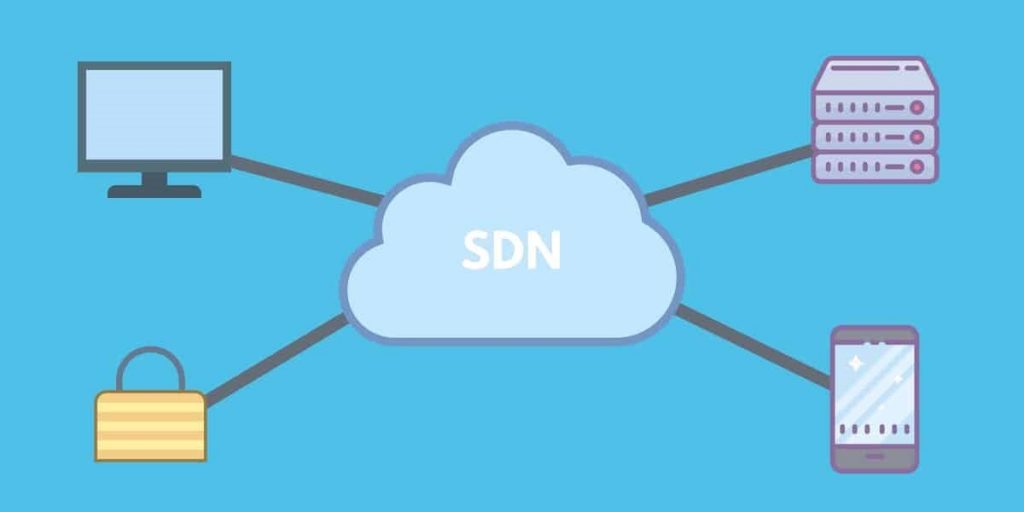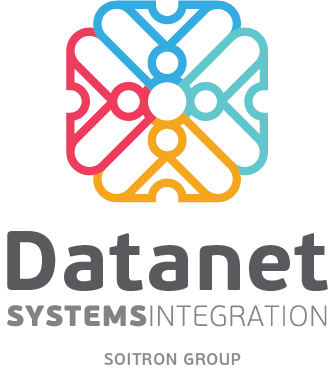 The development of the digital economy forces organizations to keep up with the evolving demands of both their own employees and their end-customers. If the employees call for guarantees on the availability and security of business applications, the end-customers have the same claims as to the quality of the services they are provided. Ensuring these conditions is a common goal for any company, but the challenges that need to be overcome are few. On the one hand, it is the operational effort involved in the management of heterogeneous IT infrastructures, with tens and even hundreds of equipment to be manually configured. On the other hand, critical tools need to be able to manage both hybrid environments resulting from the integration of on-premises infrastructures with public cloud environments and geographically distributed IT architectures. The IT industry’s response to this combination of requirements has been the concept of Software Defined Network (SDN).
The development of the digital economy forces organizations to keep up with the evolving demands of both their own employees and their end-customers. If the employees call for guarantees on the availability and security of business applications, the end-customers have the same claims as to the quality of the services they are provided. Ensuring these conditions is a common goal for any company, but the challenges that need to be overcome are few. On the one hand, it is the operational effort involved in the management of heterogeneous IT infrastructures, with tens and even hundreds of equipment to be manually configured. On the other hand, critical tools need to be able to manage both hybrid environments resulting from the integration of on-premises infrastructures with public cloud environments and geographically distributed IT architectures. The IT industry’s response to this combination of requirements has been the concept of Software Defined Network (SDN).
SDN, a 10-year-old solution…
The IT industry’s response to this cumulative set of requirements has begun to emerge as early as 10-11 years ago when the Software-Defined Network (SDN) concept was first launched.
According to the definition of the Open Networking Foundation, SDN realizes the physical separation between Control Plane (the “smart” component of network equipment that determines how traffic needs to take into account the status of infrastructure components and application-specific requirements) and Data Plane ( network switches and routers, but also the data itself, as well as the data transmission process to the appropriate destination). Basically, the external controller communicates with each network component and applications, so it can adjust network parameters to ensure compliance with the application’s quality requirements.
The main advantage of this approach – innovative over a decade ago – lies in the fact that it ensures centralized network control and correlation of the measures taken to achieve the optimal level of performance. Without the need for each device itself to be manually configured and lowering the risk of human error (which accounts for 60% of unplanned downtime according to the Enterprise Management Association). The immediate gains are obvious: increasing levels of agility and flexibility in network operation and reducing operational effort by automating network definition, application and changing network rules.
… but extremely current
Considered three to four years ago, a solution strictly reserved for data centers and large service providers, SDN has begun in recent years to grow even more among other types of companies. The reasons are similar to those listed at the beginning: problems in integrating and centralized management of virtual and physical environments, adoption of Cloud services on a large scale, development of Edge Computing architectures, IoT projects, etc. (You can read HERE a detailed analysis of the main reasons why companies adopt SDN solutions.)
On the other hand, the increase in the popularity of SDN solutions is also due to the fact that currently the concept is much better understood in the market, there are already established usage scenarios and the benefits are already proven by numerous case studies.
Market analysts such as IDC believe that SDN is now a mature technology, with solid organic growth (about 19% annually).
SDN in Cisco’s offer
One of the established SDN market leaders is Cisco, with Application Centric Infrastructure (ACI) solution, which, although was launched on the market in 2013, already has thousands of implementations around the world. Projects are also available in Romania, implemented by Datanet specialists.
The success of ACI is largely due to the fact that it is … more than an SDN solution. The main competitive advantage of the Cisco product is that it has as central elements the way applications communicate with the network and the application of the rules by which these processes are carried out. Practically, ACI dictates what application can “talk” with what equipment in the network and what types of data can be transmitted.
For this, the Application Policy Infrastructure Controller (APIC) – works in a way different from other SDN solutions. APIC does not act on the data path in the network, but centralizes policies and automates their implementation and deployment (both in virtual and physical environments), translating application requirements into device configurations. It is an innovative approach that simplifies both the network development and configuration and their centralized management process.
Gains brought by an SDN Cisco ACI project
The list of benefits provided by Cisco ACI is consistent:
- Expanding the infrastructure’s visibility and rapidly identifying the elements necessary for the optimal operation of an application or the delivery of a service;
- Automatic detection of configuration errors and problems that may affect application performance;
- Making configuration templates, facilitating rapid multiplication of services and reuse of infrastructure resources;
- Defining and centralized implementation of policies by which applications and infrastructure elements communicate with each other and access resources;
- Reducing the effort of managing heterogeneous infrastructures, ensuring extensive software and hardware compatibility,
- detailed control of how resources are accessed;
- Micro-segmentation of the granular network and definition of specific security policies.
All these advantages translate into directly measurable gains, such as:
- reducing operational costs by up to 45%;
- downsizing the volume of manually executed operations by up to 90%;
- reducing network provisioning costs by up to 58%;
- improving application performance by up to 80%.
Their figures are extracted from case studies of already implemented Cisco ACI projects. However, there are also performance tests, such as the one made by Forrester Research showing that application development is accomplished 90% faster and the cost of hardware purchases decreases by 20%.
Compatibility with the solutions of 36 vendors
Even though ACI also integrates Cisco hardware components (the Nexus 9000 series of switches), this does not mean it is not compatible with other third-party vendor solutions. Cisco is working closely with an eco-system of 36 partners, including F5, Citrix, and Fortinet, as well as major Cloud platform vendors – AWS, Microsoft, and Google.
Datanet Systems can help you capitalize on the benefits of expanded compatibility, making it cost-effective for your investments. We are the main Cisco partner in Romania, we have the largest number of certified specialists and numerous implementations of complex infrastructure projects made in the main data centers in Romania.
In addition, Datanet is the first company to invest in creating and developing a Cisco ACI lab in Romania. Therefore, if you are interested in knowing exactly what earnings you can get using Cisco ACI and perform SDN simulations, tests and validations in scenarios that reproduce the real specifications and configurations in your company, you can contact us.
 Backup, a mandatory requirement for...
Backup, a mandatory requirement for...
